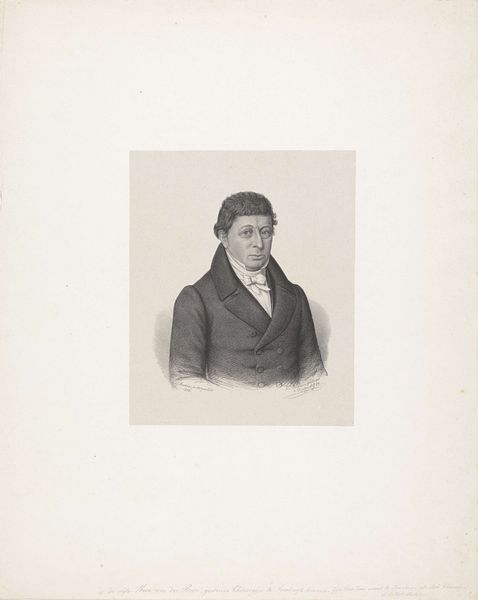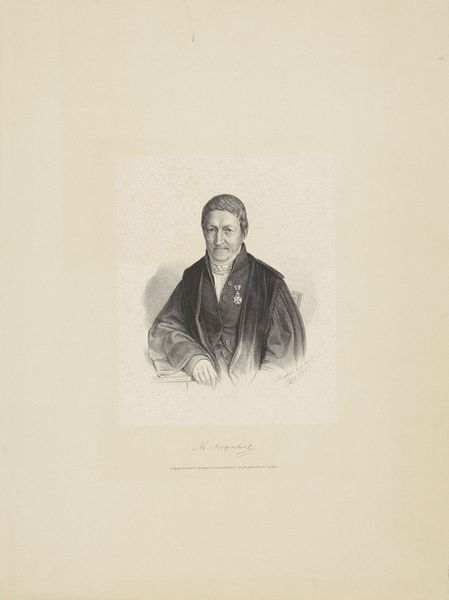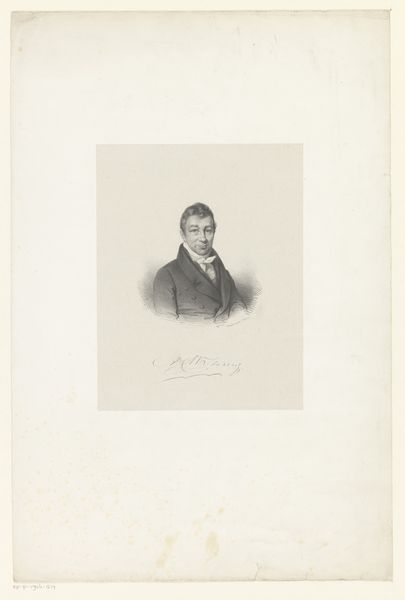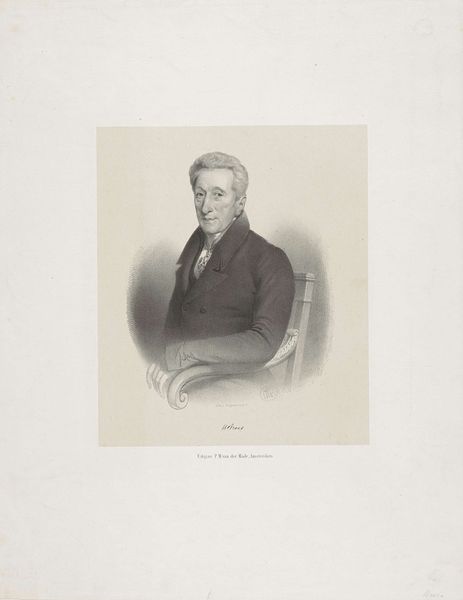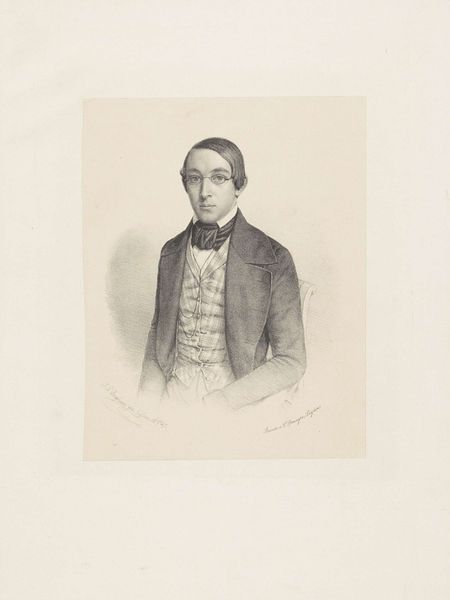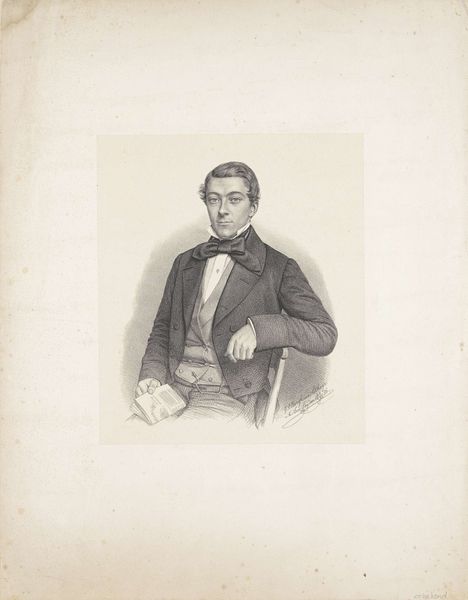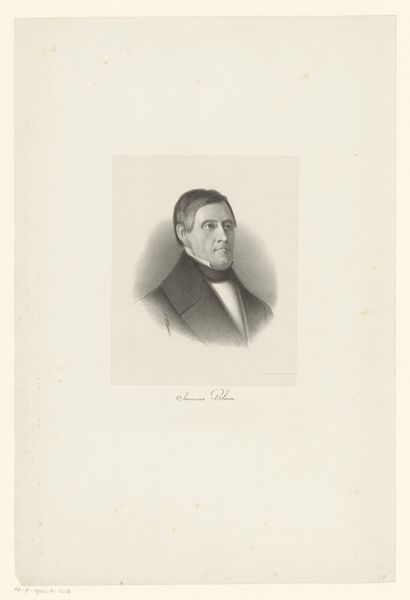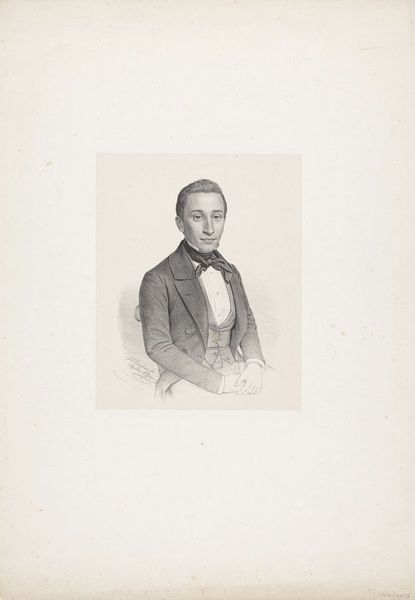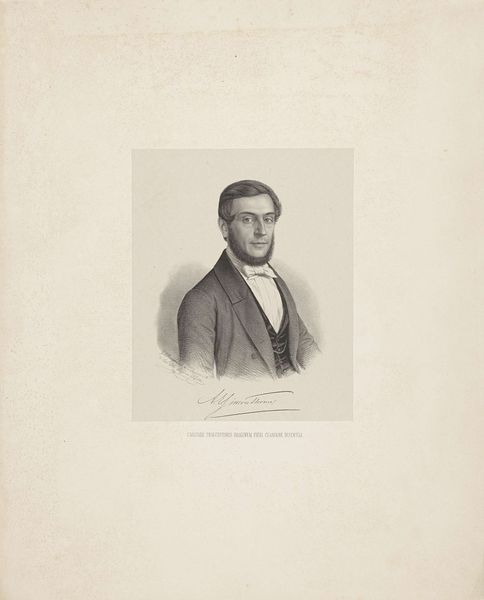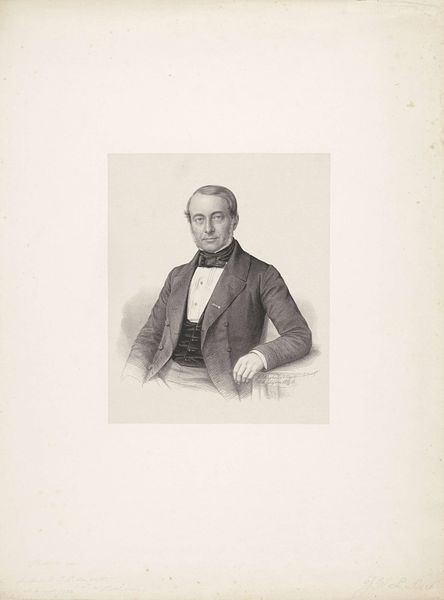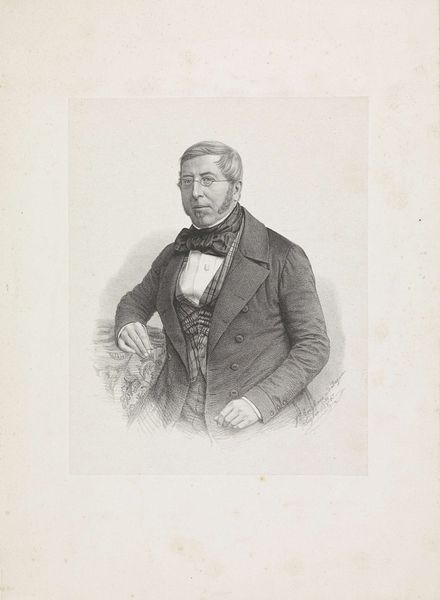
drawing, pencil
#
portrait
#
pencil drawn
#
drawing
#
yellowing background
#
pencil drawing
#
pencil
#
portrait drawing
#
academic-art
Dimensions: height 437 mm, width 345 mm
Copyright: Rijks Museum: Open Domain
Johann Peter Berghaus created this portrait of J.C. Blom using lithography, a printmaking process that democratized image production in the 19th century. Unlike traditional engraving, which requires laborious carving, lithography uses a flat stone and greasy crayon. The artist draws directly onto the stone, and then, through chemical processes, the design is transferred to paper. This method allowed for a softer, more tonal quality, evident in the subtle shading of Blom's face and coat. The lithographic technique lent itself to mass production, making portraits like this more accessible to a growing middle class. The meticulous detail in the print speaks to the skilled labor involved, even in this relatively "easy" printmaking method. Berghaus’s choice of lithography reflects a shift towards industrialization and a growing market for affordable portraiture, moving away from unique hand-made objects.
Comments
No comments
Be the first to comment and join the conversation on the ultimate creative platform.
